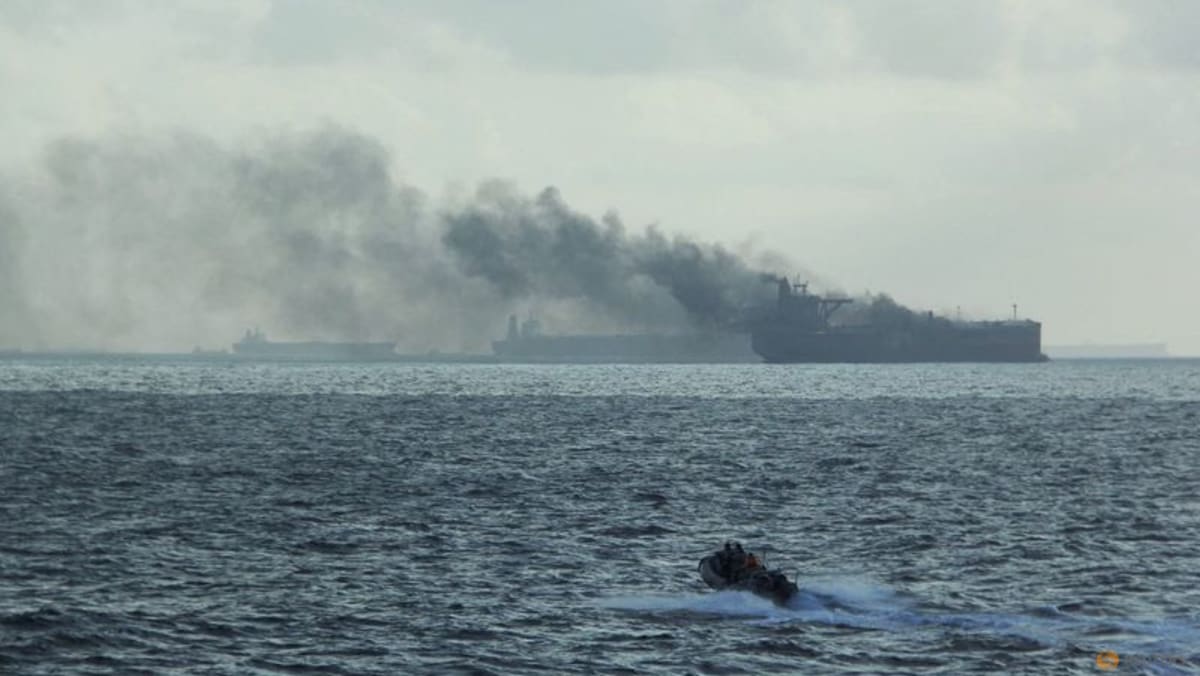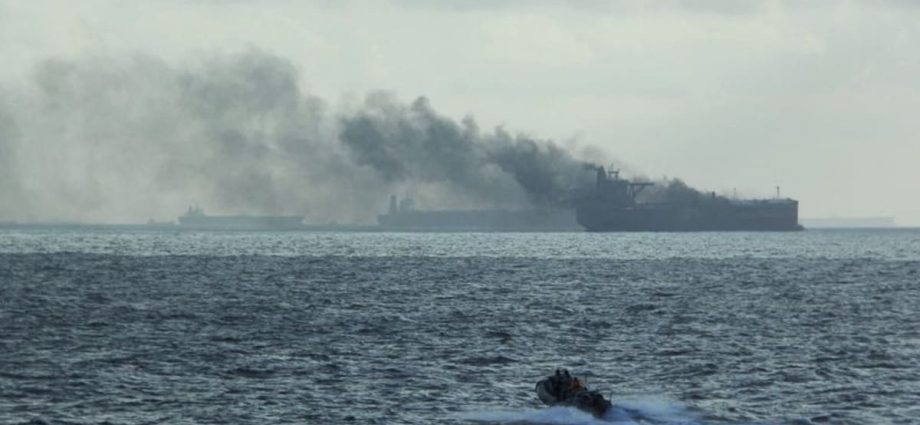
How did it happen?
The Hafnia Nile was en route to Kashima, Japan, and moving at 14.2 knots when the collision happened, according to automatic identification system (AIS) data.
The AIS provides information on the identity and location of all ships.
The 228m-long and 32m-wide tanker was carrying up to 60,000 metric tonnes of naphtha, a highly flammable mixture used to make petrochemicals, according to data from analytics firm Kpler.
AIS data meanwhile showed the 330m-long and 60m-wide Ceres I moving at zero knots at the time.
The National University of Singapore (NUS) law faculty’s Emeritus Professor Robert Beckman said AIS spoofing may have contributed to Ceres I colliding with the Hafnia Nile.
The practice involves the deliberate manipulation of AIS data to disguise the actual location of the ship, explained Prof Beckman, who co-heads an ocean law and policy programme at the university.
In a LinkedIn post, maritime information service Lloyd’s List Intelligence’s principal analyst Michelle Wiese Bockmann called Ceres I a “serial spoofer”.
Its AIS records before the collision showed an unchanged or identical course and speed for long periods, an improbability given navigation and weather adjustments, she added.
Why would Ceres I be spoofing?
Prof Beckman pointed to maritime journal reports of the Ceres I shipping sanctioned Iranian and Russian oil over the past five years, and engaging “in a range of dangerous and deceptive shipping practices”.
That would render the tanker as what’s known as a “dark ship” and part of a “dark fleet”, which employs illicit or evasive tactics to transport across the world oil from countries subject to global sanctions, he explained.
Operated by China’s Shanghai Prosperity Ship Management, Ceres I is categorised as a very large crude carrier (VLCC) – among the biggest out there, and capable of carrying around two million barrels.
Kpler data showed the Ceres I carrying cargo from Iran and Venezuela earlier this year and the last.
Ceres I also discharged heavy Iranian crude in the waters off eastern Malaysia around June, according to Ms Bockmann.
“The area is well-known for storage and ship-to-ship transfers of sanctioned Iranian, Venezuelan and Russian oil destined for China,” she noted.
Iran’s Ministry of Petroleum has issued a statement saying the Ceres I was not carrying Iranian crude oil.

